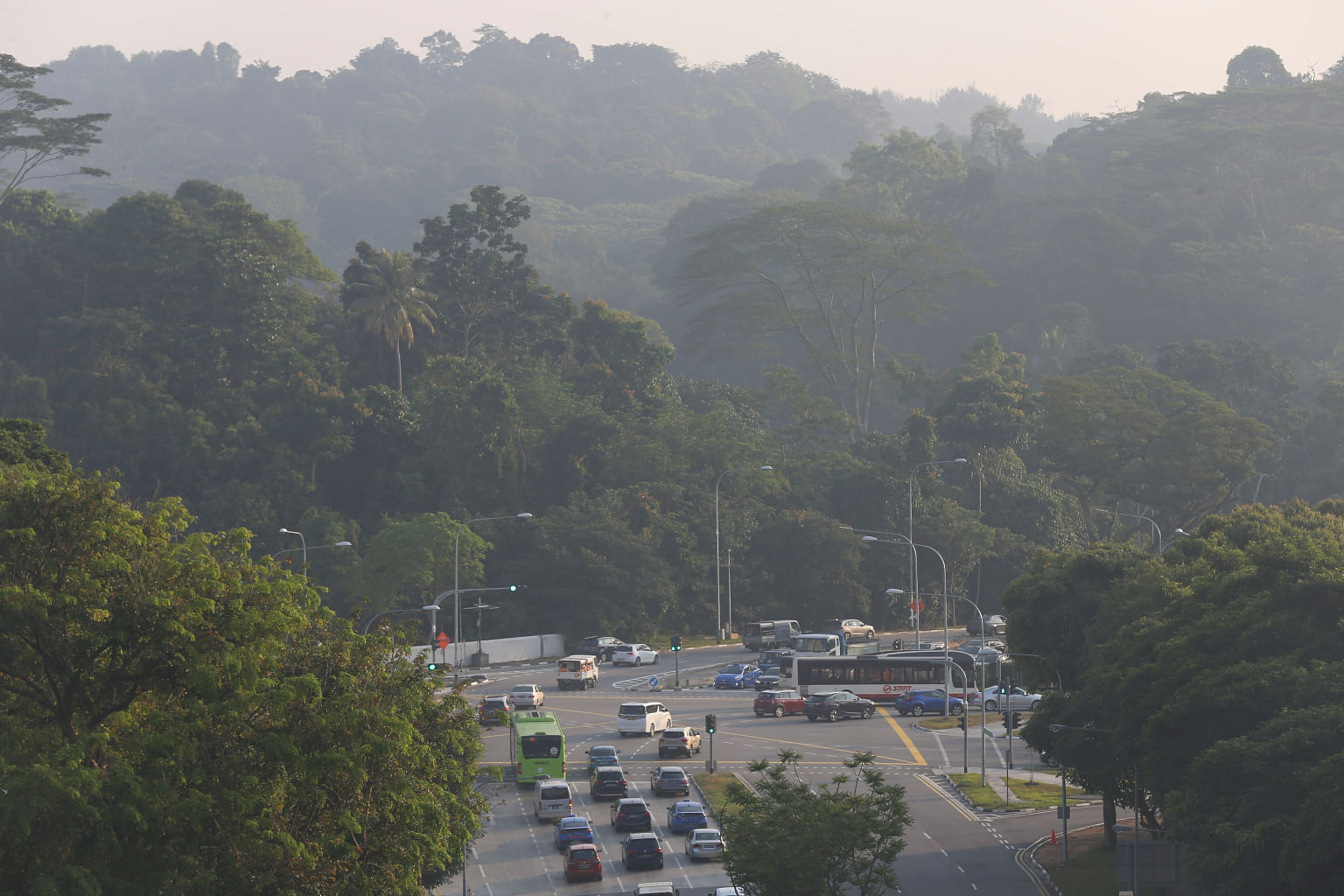SINGAPORE - Air quality in Singapore hit unhealthy levels in the north over the weekend because of higher levels of a pollutant known as ozone, and not because of transboundary haze.
"At 7pm on Saturday (Feb 27), the Pollutant Standards Index (PSI) in the north region entered the unhealthy range due to heightened levels of ozone," the National Environment Agency (NEA) said in response to queries from The Straits Times.
At that point, the PSI reading - a measure of air quality here - in the north was 102. It climbed to a peak of 108 at 8pm, before dropping to 90 at 10pm.
Air quality is considered unhealthy when PSI is in the range of 101 to 200.
During such periods, healthy people are urged to reduce prolonged or strenuous outdoor physical exertion, while vulnerable groups, including pregnant women, children and the elderly, should minimise such exertion.
When air quality is "moderate" - with PSI readings between 51 and 100 - normal activities can go ahead for all groups.
The PSI is calculated based on six pollutants - particulate matter, fine particulate matter (PM2.5), sulphur dioxide, carbon monoxide, ozone and nitrogen dioxide.
This means that a spike in concentrations of any one of the six can lead to a deterioration in air quality.
During periods of haze caused by forest fires in the region, the dominant pollutant is PM2.5. An NEA spokesman said the PSI last entered the unhealthy range for eight hours over Nov 13 and 14 in 2019, in the southern region, due to elevated PM2.5 levels.
Although the ozone sub-index - based on an eight-hour average concentration - was in the unhealthy range for three hours on Saturday, the unhealthy ozone levels could have persisted for at least 10 hours that day, said Associate Professor Koh Tieh Yong, a weather and climate scientist at the Singapore University of Social Sciences.
Family physician Leong Choon Kit from Mission Medical Clinic, said: "In theory, higher ozone levels will irritate the respiratory system. Vulnerable people may get breathlessness, wheezing, cough, or chest pain."
He added that while the PSI above 100 is unhealthy, most people will suffer symptoms only when levels breach 200.
Dr Tan Teck Jack, Northeast Medical Group's chief executive, said asthmatics, children, elderly with lung and heart issues, and those who work outdoors, are more vulnerable to higher ozone levels.
What is ozone?
Ozone is a gas that is made up of three oxygen atoms.
Whether it is beneficial or harmful to humans depends on where it is found.
"Good ozone" occurs naturally in the upper parts of the atmosphere, where it forms a protective layer that shields life on earth from the sun's harmful ultraviolet rays, according to the United States Environmental Protection Agency's website. This is why a hole in the ozone layer is of concern.
But when the ozone is found at the ground level, it is considered a pollutant. It is one of the main components of smog.
Unlike other forms of pollution that are caused by direct emissions - such as carbon monoxide from a vehicle's tailpipe - ozone is not directly emitted into the air.
Instead, it is formed when other components of the air, nitrogen oxides and volatile organic compounds, react under specific environmental conditions, including the presence of sunlight.
"The pollutants which contribute to the formation of ozone - nitrogen dioxide and volatile organic compounds - were within the normal levels," explained the NEA spokesman. "But weather conditions such as ambient temperature, ultraviolet levels, wind speed, wind direction and rainfall can also influence the formation of ground-level ozone."
For example, the maximum temperature on Feb 27 was 35.3 deg C. This was the highest recorded in 2021 for the northern region, the spokesman said.
"This, coupled with the high ultraviolet levels, could have contributed to the elevated ozone levels, reaching the unhealthy range," she said.

Assoc Prof Koh told ST that ground-level ozone can also be destroyed by hydroxyl radicals - a "cleaning agent" in the atmosphere that is formed naturally from water vapour.
But as the northern regions of Singapore are located farthest from the large expanse of sea to the south, the concentration of hydroxyl radicals would have been lowest, Prof Koh explained.
Moreover, the ongoing dry conditions due to the current phase of the north-east monsoon season are bringing in drier winds.
"This makes it harder to remove ozone once it is formed," he said.

Update on transboundary haze
In February, Indonesian President Joko Widodo urged local authorities there to prepare for potential forest fires later this year, as hot spots had been detected in Sumatra, south-west of Singapore.
His comments had led to speculation on social media if Saturday's bad air quality had been caused by transboundary haze from fires there.
But it is unlikely that smoke from hot spots in Sumatra had contributed to the bad air quality in Singapore this time.
This is because during the ongoing north-east monsoon season, winds blow mainly from the north or north-east.
A spokesman from NEA's Meteorological Service Singapore told ST that as wind is likely to continue blowing from the north over the next few days, "any smoke haze from the fires in Sumatra is not likely to be blown toward us".
He added: "However, we may be affected by the haze should more hot spots develop in Sumatra and the winds shift to blow from the west or north-west."


